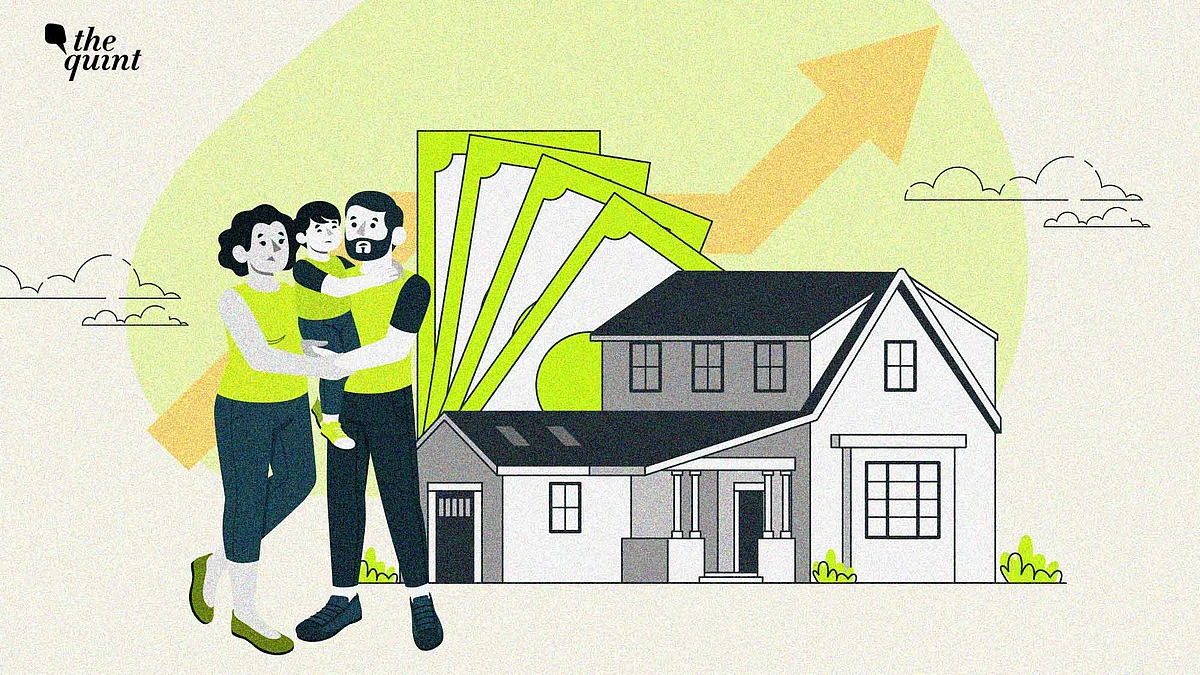
Rent or Home Loan? For the Middle Class, It’s a Hard Choice Between the Two
Middle-class families can no longer dream of buying their own homes, writes Aunindyo Chakravarty.

advertisement
Four years ago, when I moved from Delhi to Gurugram, a three BHK apartment with decent construction quality cost around Rs 50,000 a month. The same house now goes for Rs 85,000. That’s an average annual rent hike of 14 percent.
In the more expensive parts of Gurugram, such as the blocks of flats on Golf Course Road, rent inflation has been even steeper. Something that would cost you Rs 1.5 lakhs in 2021 now goes for Rs 3 lakh. It has increased at 19 percent per year.
Compare that to the stock markets.
In the same four-year period, the Sensex has given a 12 percent return per year, the Nifty half a percent more, and the BSE500 less than 10 percent per annum.
What is true for Gurugram, is equally true for almost every other big city in India – Mumbai, Delhi, Bengaluru, Chennai, Kolkata, Ahmedabad, and Pune. Even smaller cities have seen house rents shoot up through the roof.
Why are Rents Rising So Fast?
Of course, April 2021 was the peak of COVID-19, the killer second wave, so rents were probably depressed. As cities recovered, they were bound to go up. Corporate employees who had gone back to their hometowns to work-from-home, began to return to big cities.
But it is clear that the mere recovery of post-COVID economic activity cannot justify the rate at which rents have risen.
What is more is that developers are not interested in building affordable houses anymore. In 2021, one in four new homes cost less than Rs 40 lakhs. In 2024, the share of these affordable homes dropped to one in six. On the other end of the scale, only one in 33 new homes used to cost more than Rs 2.5 crore in 2021. Now, such houses account for one in every six new launches.
Houses that cost more than Rs 1.5 crore, including the ones that had a price tag of over Rs 2.5 crore, accounted for only 9 percent of new launches in the top 7 cities. In 2024, their share went up to 30 percent.
The Fading Homeownership Dream
It is now clear that middle-class families can no longer dream of buying their own home.
Moreover, such houses are also being increasingly built further away from the city centre and key business districts. They don’t have good schools and hospitals close by. This has led to those with middle class incomes opting to rent instead of taking loans to build their own homes.
This, in turn, has pushed up the demand for rented homes, especially in the central parts of cities, which are closer to offices, schools, markets, and malls. The supply, on the other hand, is mostly on the outskirts.
The mismatch between supply and demand is pushing up rents, mostly in the more accessible parts of metros and big cities. Those who cannot afford to rent in the central parts are opting to go to the outskirts, and pushing up rentals there as well.
The Hidden Inflation
This huge rise in living costs just doesn’t get captured in official inflation data. That’s because the cost of housing makes up just 22 percent of the Consumer Price Index (CPI), which is used to calculate the inflation that consumers like you and me face.
Officially, housing costs have gone up by 17 percent in the past four years. In reality, the jump has been at least 50 percent, if not more. Similarly, while India’s overall retail inflation has been reported at 5 percent per year over the same period, adjusting for real rent inflation pushes this figure closer to 7 percent.
In other words, middle class families who live in rented homes have been facing an annual inflation rate of at least seven percent, while their salaries have barely moved. Where house rent used to be about 30 percent of their total expenses four years ago, now it is closer to 35 percent.
This is the class which accounts for the bulk of, what economists call, 'aggregate demand in the economy.' If they don’t have money to spend, businesses will struggle to sell their goods and services. There will be a general economic slowdown. As corporate profit margins get squeezed, the stock markets will find it difficult to bounce back.
What Next? Will House Rents Fall?
This contagion will ultimately infect all asset classes. Real estate, too, will not be immune to this. We are already seeing that happen. Housing sales, in the top seven cities dropped by four percent in 2024 compared to the previous year. New launches saw a bigger seven percent decline.
Will this result in a drop in house rents?
If that happens, more people might want to put their homes out on rent. That might cause a slight drop in house rents in the big cities. But history shows that once house rents rise, they usually don’t go down too much. They just stop increasing at the same pace.
India’s middle class is in deep trouble right now. A slowdown in housing inflation might make things slightly easier, but that is only if their incomes grow at a faster rate.
All indicators suggest, that is unlikely to happen in the near future.
(The author was Senior Managing Editor, NDTV India & NDTV Profit. He tweets @Aunindyo2023. This is an opinion piece. The views expressed above are the author’s own. The Quint neither endorses nor is responsible for them.)
- Access to all paywalled content on site
- Ad-free experience across The Quint
- Early previews of our Special Projects
Published: 01 Apr 2025,10:47 AM IST